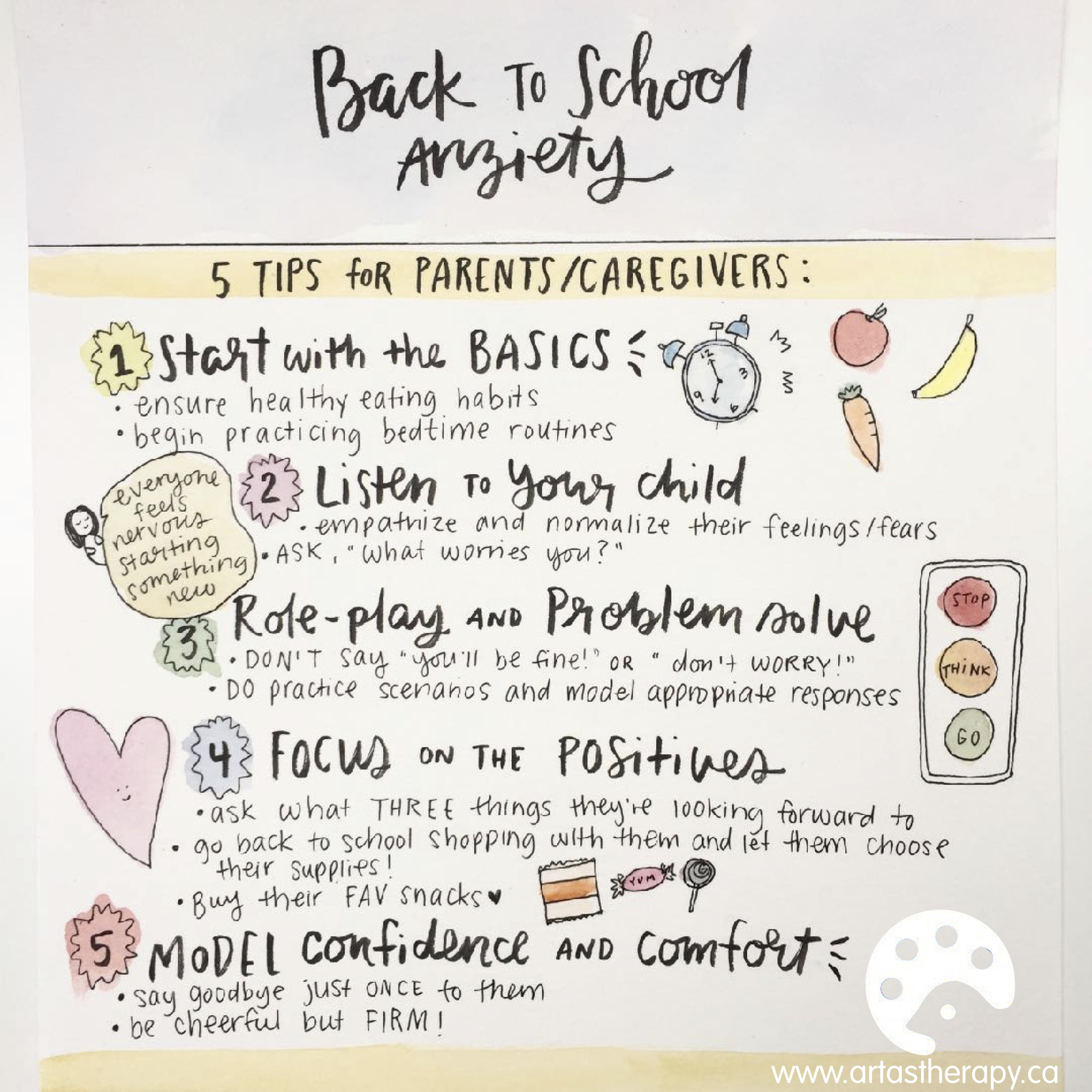Illustration by Sally Chung Art Therapist
Going back to school after summer’s freedom can be tough for some children, sometimes leading to tears, outbursts, difficulty in transitions and other signs of anxiety. If this has been your experience as a parent or caregiver, that’s okay! Having a level of back to school anxiety is normal for most kids. As a way to support families and children before the school year begins, Art as Therapy will be providing a series on back to school anxiety, starting from some practical tips for caregivers on how to support your child before school starts.
1. Start with the basics.
What does this look like? It begins by making sure your child is eating right and sleeping well. When children feel anxious, they sometimes lose appetite or don’t get enough sleep. Create a schedule to provide frequent nutritious snacks and begin establishing a morning and bedtime routine. This means giving time for your child to practice waking up early and sleeping earlier too. Routines can’t be created overnight, so give a couple weeks before school starts to allow your child time to adjust to this pattern- and remember to turn off all tablets and smartphones!
2. Listen to your child and normalize their fears.
Your child may have a list of fears and worries about going back to school and they most likely need a space to talk about them. Provide a regular time and place for them to share (before bed, during mealtime) and normalize their worries by letting them know that everyone feels nervous when starting something new. Perhaps this could be a perfect chance for you to share a time when you were a child and worried about returning to school! Remember to empathize and validate their feelings.
3. Role-play and problem solve!
It may be natural for us to give the response, “Don’t worry!” or “It’ll be great!”, but rather than reassuring, allowing them a chance to problem solve if *fill in the blank* happens can equip your child and provide them with an opportunity to cope with challenging situations. Ask your child what their worries are and give them the chance to role-play the scenario by being the mean classmate or the strict teacher. Model appropriate responses and coping strategies for your child, and allow your child to ask questions, practice and feel confident if a similar situation occurred.
4. Focus on the positive.
Although it’s crucial to always listen to your child and validate their feelings, it’s also important to discuss some of the experiences they’re looking forward to. Normally kids are able to find positive aspects of school which can help reduce some of their fears. It may also be important to engage your kids in some of the positive experiences before going back such as going out to purchase school supplies with them (let them choose!) or giving them the opportunity to choose their favourite snacks to eat.
5. Model confidence and comfort.
More than we know, children are very attuned and sensitive to your feelings as a caregiver or parent, picking up on the anxiety that you may be feeling. Although this may be an anxiety-provoking experience for you as well, the more confidence and comfort you portray, your child will be able to pick up on that too. Be supportive, cheerful yet firm!
If you feel that your child’s anxiety is concerning and beyond what you might normally expect and are interested in whether Art Therapy could a potential support for you or your child, feel free to contact us via admin@artastherapy.ca or call us on 519 307 9000. We have two convenient locations in Orangeville and in Milton and we serve surrounding areas.
Sally Chung
Art Therapist at Art as Therapy
Resources and related links
Creative strategies for managing back to school anxiety
Helping your child cope with back to school anxiety
Tips to help kids with back to school anxiety
Three tips for facing social fears at High School


